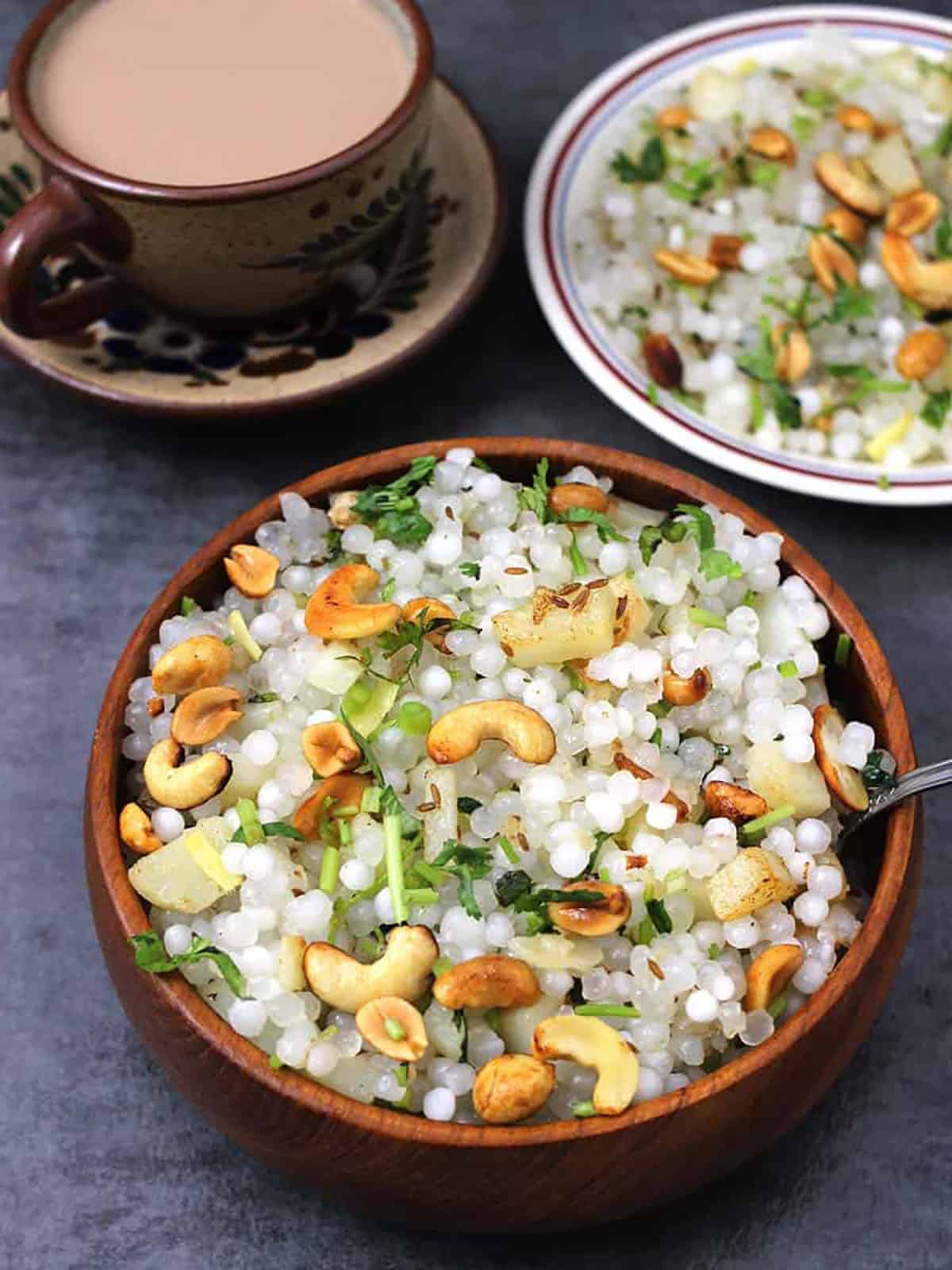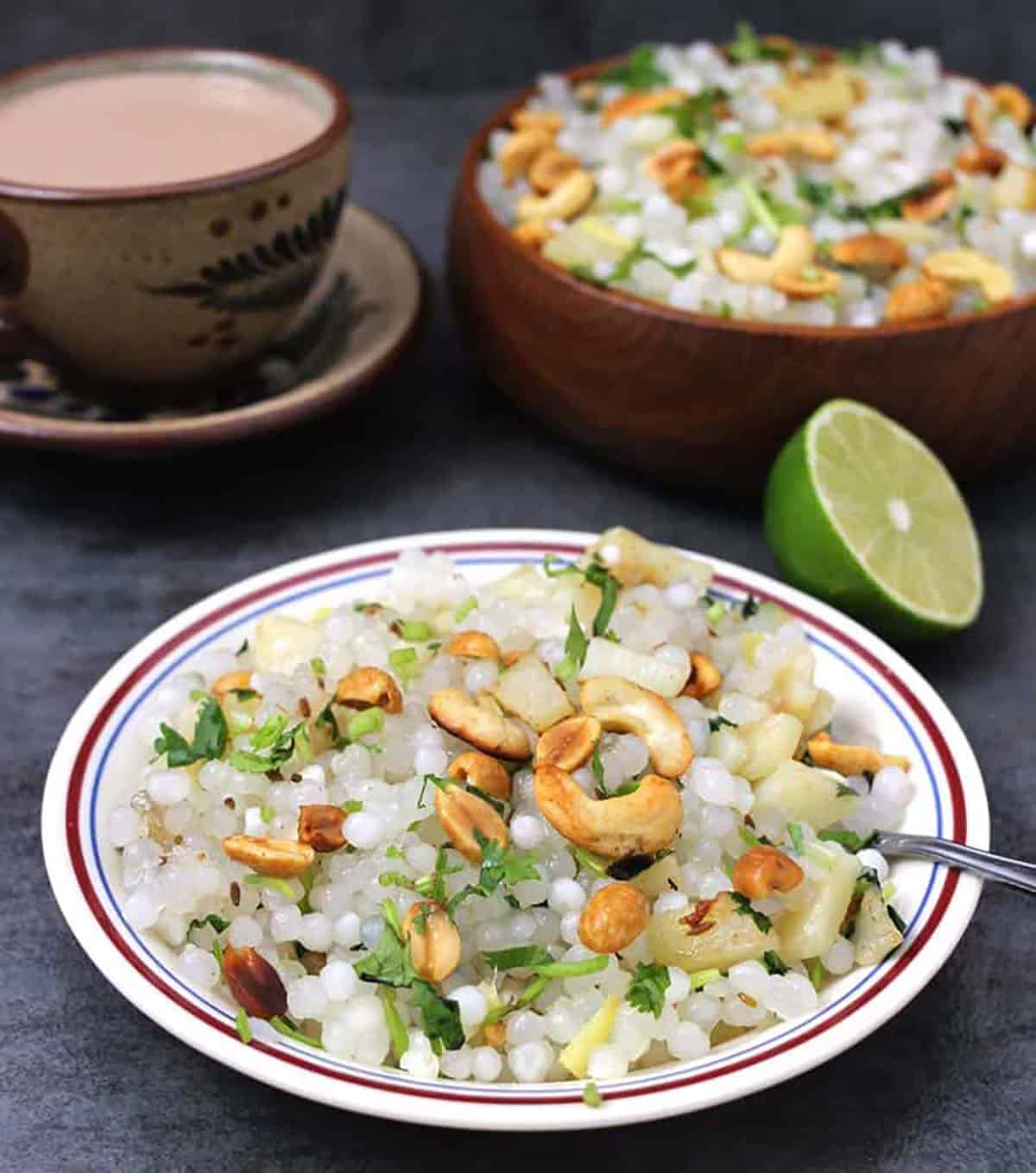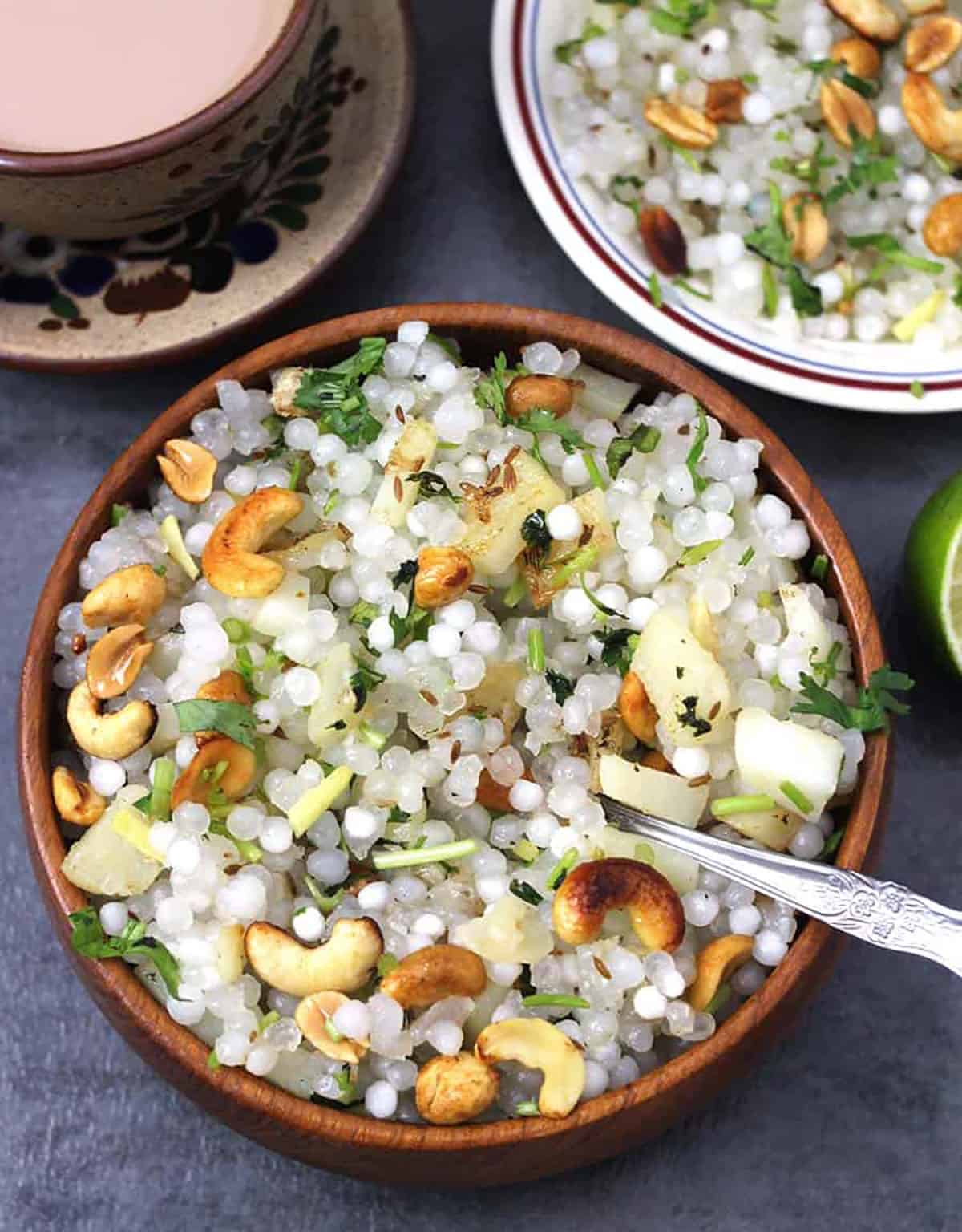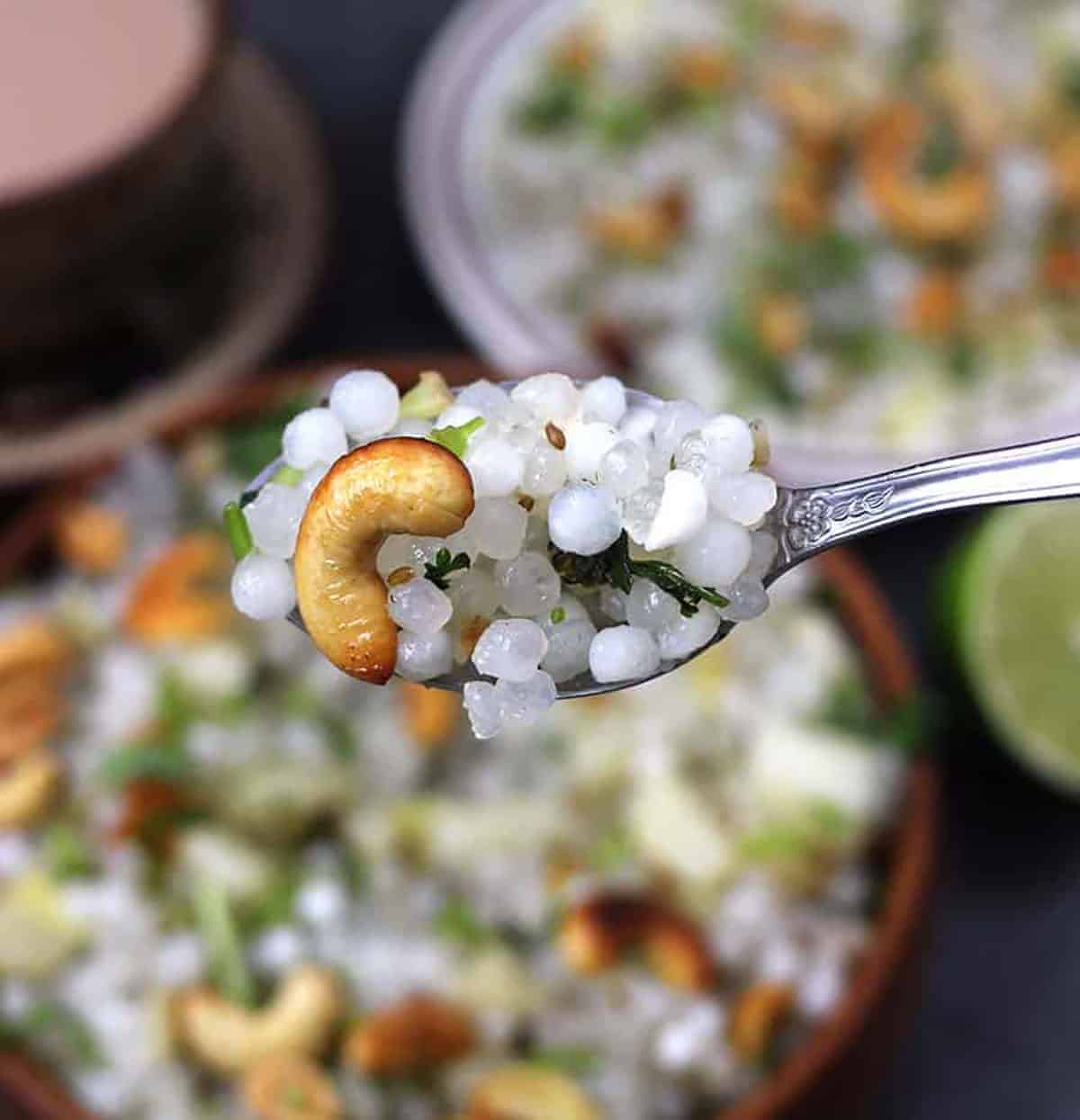Sabudana Khichdi is also a traditional Indian breakfast recipe, along with thepla, idli, upma, poha, and dosa.
Traditional vrat, fasting Sabudana recipe
Sabudana Khichdi is also one of the most popular fasting or vrat recipes prepared during the Navratri season. Sabudana Khichdi is also known as sabudana upma, sago pilaf or pulao or pulav, aloo or potato khichdi, sabudana usal, or saggubiyyam upma. I prepare sabudana khichdi frequently, especially during fasting and vrat (Sai Guruvar, Sankashti, Ekadashi). In this post, I will share all the tips and tricks I have learned over the years to make perfect non-sticky sabudana khichdi or aloo (potato) khichdi or sago recipes every single time. I like to serve Sabudana Khichdi for breakfast, as an evening snack, or for vegetarian lunch or dinner on fasting (upvas) or vrat days. Check out 9 days of Navaratri recipes and Indian fasting and upvas, vrat recipe.
Ingredients and variations
If preparing khichdi on a fasting day, I limit my ingredients to potatoes, cumin seeds, curry leaves, peanuts or cashew nuts, green chilies, ginger, lemon juice, and rock salt (i.e., sendha namak). If preparing for breakfast or snack on other days, I love to add sautéed onion and garlic. Add copra or freshly grated coconut to give it a South Indian touch. To make it an authentic Maharashtrian-style khichdi, you can dry roast peanuts, grind them to a coarse powder, and add them with sabudana. If you are allergic to nuts, skip peanuts (groundnuts) and cashew nuts. You can also add veggies to make it a colorful dish for lunch or dinner.
How to make perfect, non-sticky, fluffy sabudana khichdi?
A crucial step is placing sabudana or sago in a colander. Wash with cold tap water till the water runs clear. This is mainly done to remove all the starch, which prevents it from sticking. Soak the sabudana in water, preferably overnight. Do not add too much water while soaking; it will make your dish mushy or clumpy. The water-to-sabudana ratio is very important. Use a 1:1 ratio of sabudana and water for soaking. For eyeball measurement, ensure the water is just ¼ to ½ inch more than the sabudana level in a regular bowl. After soaking overnight and doing smash text, drain off excess water using the colander. While doing the smash test on the sabudana, if you still feel it’s hard on the inside, add another cup of water and let it continue to soak for some more time.
I prefer cooking sabudana khichdi in a nonstick pan. The entire process will be easier and will not mess up. Do not use a cast iron pan - as the heat will make sabudana stick to the pan. Once you add sabudana, sago, or tapioca pearls to the pan, just cook until it becomes translucent. Make sure you don’t stir or sauté it often, as this will make it sticky. Don’t skip adding lemon juice and toss at the end. This will break any bigger lumps. Small lumps will be there because sago or sabudana is full of starch. The smaller lumps will loosen up as the sabudana khichdi cools completely. Do not overcook, as khichdi will become dry and dense.
Serving suggestion
Sabudana Khichdi is a very filling dish and can be served on its own for breakfast, as a snack with a cup of tea or coffee, or for vegetarian/vegan lunch or dinner with curd salad or raita.
Store and Make ahead instructions
You can make this khichdi and store it in the refrigerator for 2-3 days. Reheat without making mushy: On the stovetop, place a nonstick pan, add the leftover sabudana khichdi, cover with a lid, and heat on low flame, sautéing just once or twice until it is heated through. To reheat in a microwave, transfer the khichdi to a microwave-safe bowl and warm for 30 seconds.
More Sabudana recipes
Recipe card
Did you like this recipe? Please leave a star ⭐️⭐️⭐️⭐️⭐️ rating below and/or a review in the comments section. You can also stay in touch with us through social media by following us on Pinterest, Facebook, Instagram, and Twitter.










